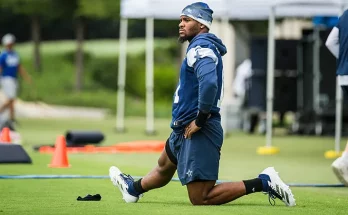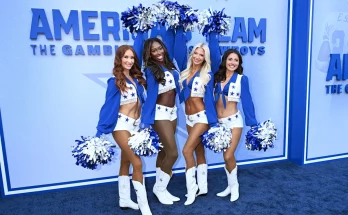Arch Manning’s arrival into college football was never going to be treated like just another highly touted recruit making his way into the sport. With a name carrying as much weight as any family lineage in American sports history, expectations were bound to be monumental from the very start. The Manning name alone is enough to draw attention, but when you factor in Arch’s immense talent, his position as a quarterback, and the spotlight of the Texas Longhorns program, the stage has been set for what could be one of the most intriguing careers college football has seen in decades. With his development at Texas already drawing comparisons to great quarterbacks of the past, one question looms larger than most: could Arch Manning follow in the footsteps of Joe Burrow and not only rise to stardom but also win the Heisman Trophy? The parallels may not be identical, but the storylines and potential outcomes suggest that such a path is not just possible, but perhaps even likely.
To understand the magnitude of this possibility, it is important to revisit what Joe Burrow accomplished. Burrow was a transfer quarterback who went from being largely overlooked at Ohio State to orchestrating one of the greatest single seasons in college football history with LSU in 2019. That year, Burrow threw for over 5,600 yards and 60 touchdowns, numbers that seemed unthinkable in the competitive environment of the SEC. His poise, accuracy, and leadership carried LSU to a national championship, while his Heisman victory was the most lopsided in the award’s history. Burrow’s story was not just about numbers, but about timing, growth, and peaking at the perfect moment when both his talent and his team’s system aligned. It was a meteoric rise from relative obscurity to superstardom. While Arch Manning’s path has been much more spotlighted since high school, the idea of him hitting a Burrow-like stride at Texas is not far-fetched at all.
Arch, unlike Burrow, has carried immense expectations before ever stepping onto the college field. As the son of Cooper Manning, nephew of Peyton and Eli, and grandson of Archie, he was thrust into the spotlight at Isidore Newman High School in New Orleans, where scouts tracked his every pass. His recruiting journey was covered with a level of scrutiny reserved for only the most elite prospects, with Texas ultimately winning the sweepstakes against programs like Alabama and Georgia. For Steve Sarkisian and the Longhorns, Manning was seen not just as a recruit, but as a potential program-changer who could put Texas firmly back among the elites of college football. And it is within this context that his potential Heisman trajectory begins to mirror the Burrow arc, albeit with key differences in how each player’s story is being written.
What Manning shares with Burrow is the opportunity to thrive in a system that highlights his strengths. Steve Sarkisian is regarded as one of the best offensive minds in football, particularly when it comes to developing quarterbacks. His ability to create balance between explosive downfield plays and efficient short-passing schemes gives quarterbacks the freedom to play with confidence. Sarkisian’s system helped Mac Jones achieve Heisman finalist status at Alabama, and he was instrumental in the development of Tua Tagovailoa. With Manning’s natural arm talent, quick decision-making, and calm demeanor under pressure, Sarkisian’s offense could become the perfect vehicle for Manning to showcase the full range of his abilities, much like Joe Brady’s scheme unlocked Burrow’s potential at LSU.
But winning the Heisman is never just about individual talent—it requires the right circumstances. For Burrow, LSU had a loaded roster featuring the likes of Ja’Marr Chase, Justin Jefferson, Clyde Edwards-Helaire, and an elite offensive line. Texas, in Manning’s case, has been working to build a roster that can compete at the highest levels. The Longhorns have recruited at a top-10 level in recent years, stocking up on wide receivers, offensive line talent, and running backs. The wide receiver room, in particular, is filled with speed and skill, and if Manning can build chemistry with those playmakers, he could easily put up video-game numbers similar to Burrow’s 2019 campaign. If the supporting cast reaches its potential and Manning elevates them with his ability, the path to a Heisman run becomes increasingly clear.
Another critical factor is the stage on which Manning will be performing. Burrow’s dominance came in the SEC, where the level of competition amplified his accomplishments. Manning, with Texas transitioning into the SEC, will also be tested against the toughest defenses in college football. The SEC schedule guarantees that his performances will be under the brightest of lights, with marquee matchups against programs like Alabama, Georgia, and LSU providing ample opportunity to build a Heisman résumé. Heisman voters love signature moments, and if Manning delivers clutch performances in big games, the narrative could swing in his favor quickly. After all, the Heisman is as much about storylines as it is about raw statistics. Manning already has the name recognition that guarantees media coverage, so combining that with actual on-field dominance would create an unstoppable campaign.



